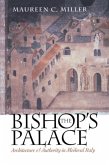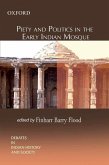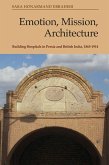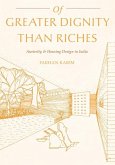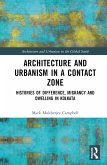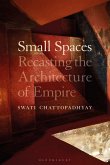The first lavishly illustrated and comprehensive record of the historic Bayana region Bayana in Rajasthan, and its monuments, challenge the perceived but established view of the development of Muslim architecture and urban form in India. At the end of the 12th century, early conquerors took the mighty Hindu fort, building the first Muslim city below on virgin ground. They later reconfigured the fort and constructed another town within it. These two towns were the centre of an autonomous region during the 15th and 16th centuries. Going beyond a simple study of the historic, architectural and archaeological remains, this book takes on the wider issues of how far the artistic traditions of Bayana, which developed independently from those of Delhi, later influenced north Indian architecture. It shows how these traditions were the forerunners of the Mughal architectural style, which drew many of its features from innovations developed first in Bayana. Key Features The first comprehensive account of this historic region Offers a broad reinvestigation of North Indian Muslim architecture through a case study of a desert town and fortress Includes detailed maps of the sites: Bayana Town, the Garden City of Sikandra and the Vijayamandargarh or Tahangar Fort with a detailed survey of its fortifications and its elaborate gate systems ● Features photographs and measured surveys of 140 monuments including mosques, minarets, waterworks, domestic dwellings, mansions, 'īdgāhs (prayer walls) and funerary edifices ● Includes epigraphic records of 58 inscriptions from the 13th to the end of the 16th century with fresh readings of texts supported by ink impressions and photographs Introduces historic outlying towns and their monuments in the region such as Barambad, Dholpur, Khanwa and Nagar-Sikri (later to become Fathpur Sikri) Demonstrates Bayana's cultural and historic importance in spite of its present obscurity and neglect Adds to the record of India's disappearing historic heritage in the wake of modernisation. Mehrdad Shokoohy is Emeritus Professor of Architecture and Urban Studies at the University of Greenwich. Natalie H. Shokoohy is an architectural historian. Together they have published numerous books including Street Shrines of Kirtipur: As Long as the Sun and Moon Endure (2014), Tughluqabad: A Paradigm for Indo-Islamic Urban Planning and its Architectural Components (2007) and Muslim Architecture of South India: The Sultanate of Ma'bar and the Traditions of the Maritime Settlers on the Malabar and Coromandel Coasts (2003). Front cover image: the prayer wall of Bayana, the earliest surviving specimen of its kind in India and probably the world. Back cover images: bastions of the Bayana Citadel, the 'impregnable fortress'; the Ukhā Masjid, the extension of 1320 to the Bayana Jāmi, praised by Ibn Baṭṭūṭa; ribbed dome in the 15th-century 'Īdgāh Masjid at Barambad; the step-well built by Khān-i Khānān Farmūlī in 1496 in the Fort of Bayana for the Hindu population. All images by Mehrdad Shokoohy.
Hinweis: Dieser Artikel kann nur an eine deutsche Lieferadresse ausgeliefert werden.
Hinweis: Dieser Artikel kann nur an eine deutsche Lieferadresse ausgeliefert werden.



